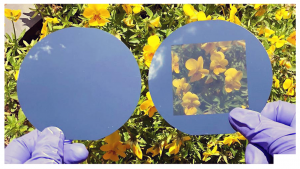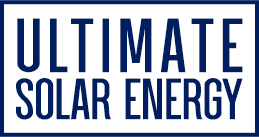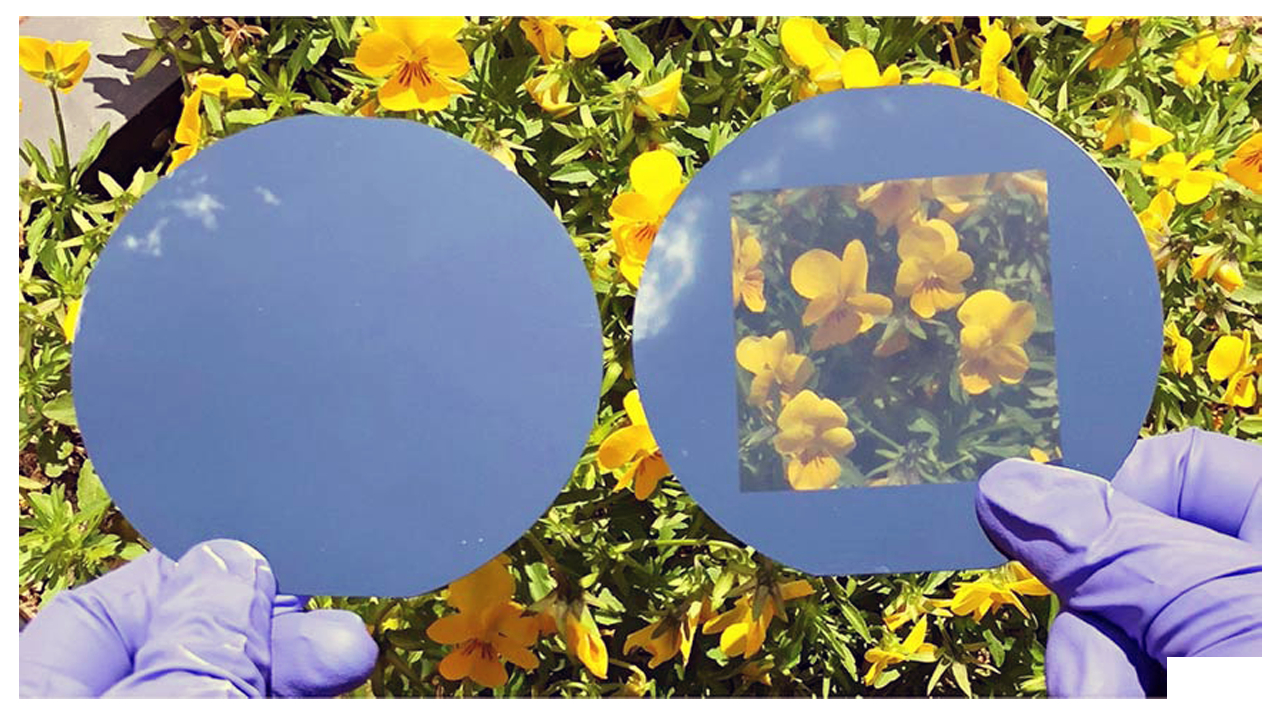Scientists use microscopic “windows” to create see-through
Scientists use microscopic “windows” to create see-through:
Scientists have successfully demonstrated a new way of making silicon solar panels ‘transparent’ that could open up new opportunities for solar energy to be produced from windows in offices and apartments, your mobile phone or even the windshield of your car.
South Korean researchers have demonstrated how they produced solar cells, using conventional silicon wafers, that have the appearance of being transparent, without significantly compromising the efficiency at which the cells produce electricity.
The findings of the research have been detailed in the journal Joule and was led by a team of scientists at the Ulsan National Institute of Science and Technology in South Korea, who developed a technique of producing tiny “windows” that let a portion of visible light to pass through the otherwise opaque silicon wafer.
The researchers noted that most research into the production of transparent solar panels has focused on the use of organic photovoltaic materials, and solar dyes, as they can be produced very thinly. However, many of these materials remain experimental and suffer from degradation and lower efficiencies.
There are several approaches to making “transparent” solar panels using silicon cells, including the window products developed by Australian based ClearVue PV, which directs sunlight to solar cells mounted along the edge of conventional window glass.

Scientists use microscopic “windows” to create see-through
However, the Korean research team sought to directly overcome the otherwise opaque nature of silicon wafers to produce a see-through silicon solar cell.
However, in an innovative approach, the Korean researchers used a conventional silicon solar wafer, just 200 micro-metres thick, and produced tiny holes, or “windows” in the wafer of between 500 nanometres and 100 micro-metres in diameter.
These “windows” allowed for a portion of the light hitting the silicon wafer to pass through the cell. The wafers were designed to allow some of the visible light to pass through the cell, while ensuring the remaining light could be used for the production of electricity.
Crucially, the researchers were able to size and space the holes throughout the wafer to ensure that light across the visible spectrum could pass through the waver. This gives the light passing through the solar cells a “neutral” colour and prevents the light from adopting a particular colour.
“Colored windows look pretty, but nobody wants to look outside through a coloured window always,” research leader Kwanyong Seo said.
“At first thought, it was a crazy idea for all of us. The problem was that crystalline silicon is not transparent, so before us, nobody tried to make transparent crystalline silicon with neutral colours.”
This approach allows for the silicon wafers to exhibit the true appearance of ‘transparency’ and prevented the transmitted light being tinged with a colour, and ensures the silicon wafers are suitable for use in everyday structures like windows.
“Transparent solar cells are attractive energy conversion devices because they can be used in various applications in our daily life, such as building-integrated photovoltaics(BIPV) and vehicle-integrated photovoltaics (VIPV),” the paper says.
The research team also see the potential for the transparent cells to be integrated into electronic devices, including smartphones, to provide an integrated supply of power.
“We believe that this vision can apply to many different applications, such as transparent electronics. It can also be applied to mobile devices as an energy source,” Seo added.
Despite the microscopic holes being created throughout the silicon wafer, the researchers were able to maintain a power conversion efficiency of the cells of up to 12.2 per cent.
The researchers are optimistic that the transparent nature of the solar cells, and comparably higher efficiencies compared to other ‘transparent’ cells, could unlock new commercial uses for the cells, including being integrated into building materials and windows.
As the cells are manufactured using the same, commonly-used, techniques as traditional silicon solar cells found in most solar panels, the researchers are optimistic that the commercialisation of the transparent solar cells should be straight forward.
“Crystalline silicon is one of the best candidates to develop transparent solar cells with high efficiency and stability, because conventional c-Si solar cells are known to exhibit high efficiency and long-term stability compared with other solar cells,” the researchers said.

